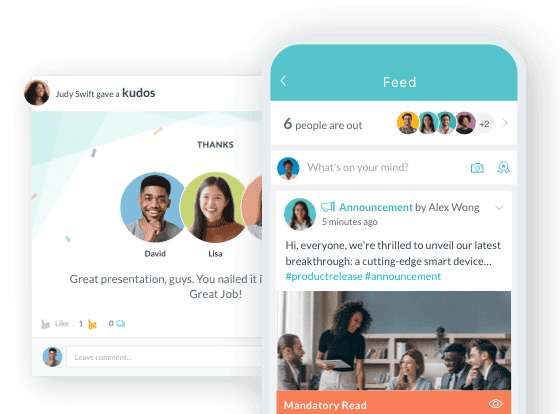Recruiting Made Simple - Five Tips for Faster and Easier Hiring

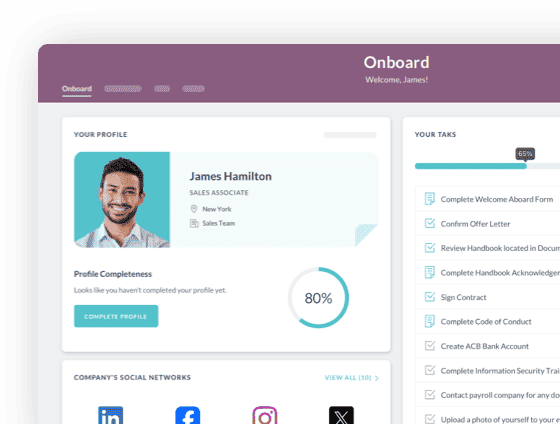
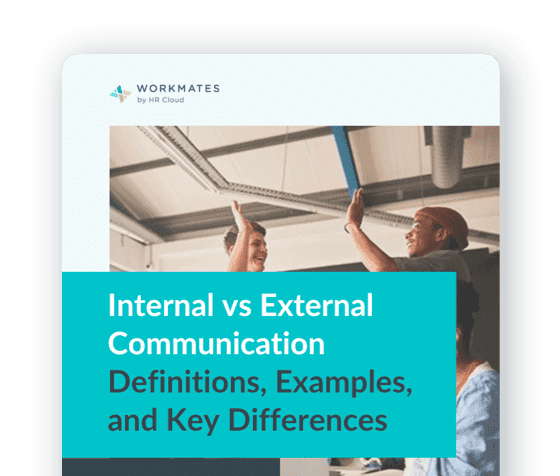
 Cut onboarding time
by 60%—here's the
Ultimate Checklist
that helped do it.
Cut onboarding time
by 60%—here's the
Ultimate Checklist
that helped do it.
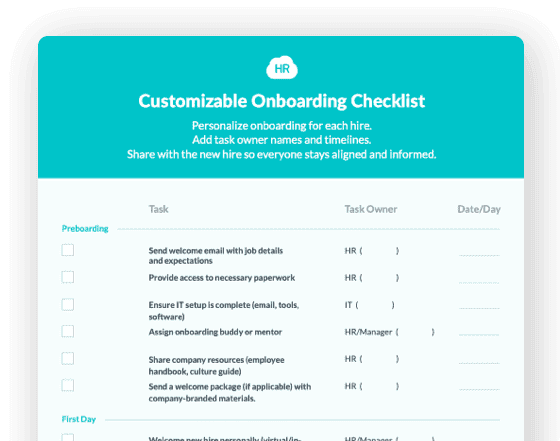
The recruiting process is one of the most tedious tasks within a company. It can be a lengthy and complicated process if you don’t have the right tools for the job. You may have to sort through hundreds of resumes, and then you have to interview potential candidates, which can take weeks. This inefficiency can significantly impact your recruitment funnel and overall workforce planning.
But there are easier ways to hire new staff that won’t take up valuable time. With the right recruitment strategies and tools, you can streamline your hiring process and find top talent for your company. In this article, we’ve provided five valuable tips to make recruitment a breeze and ensure efficient hiring.
1. Improve Your Job Descriptions 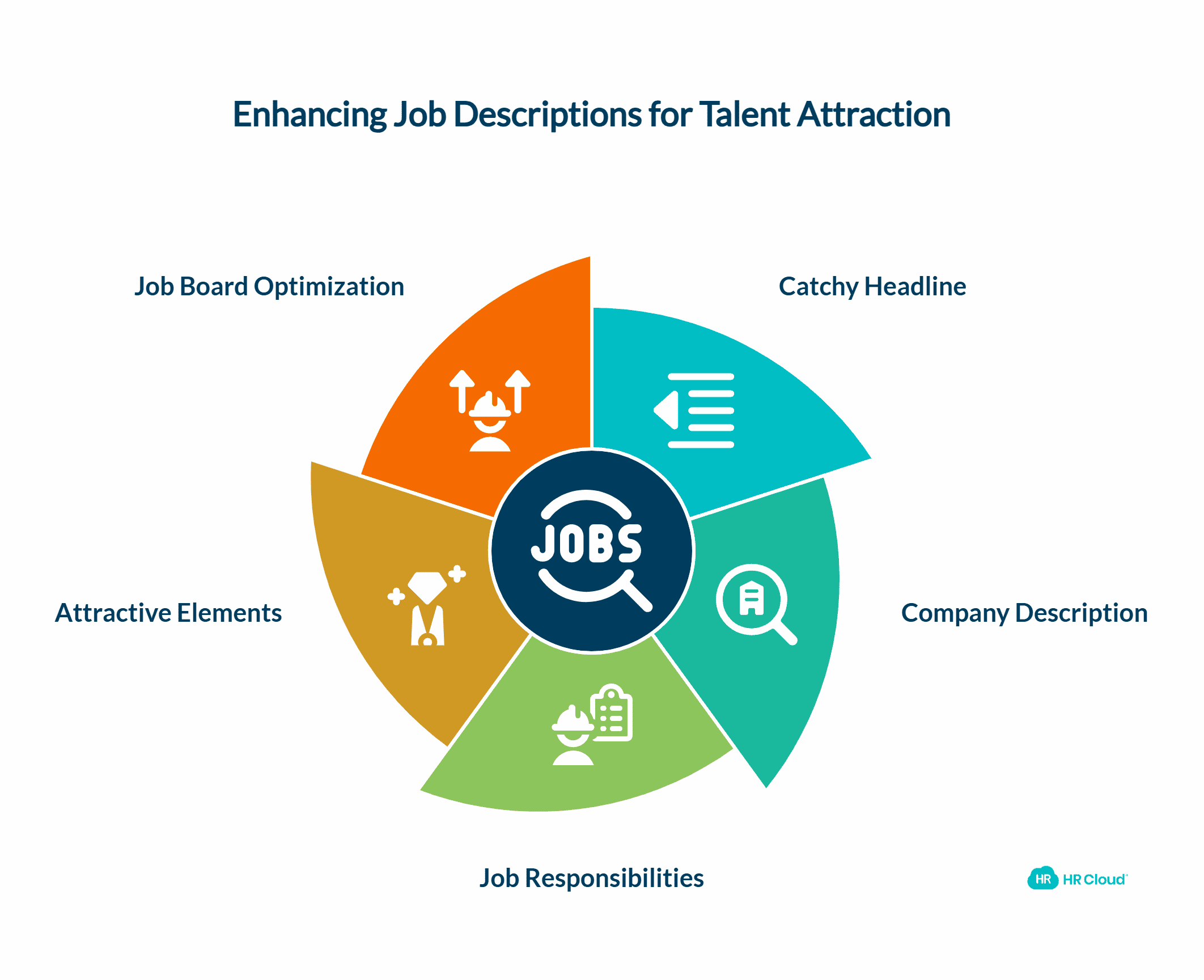
To attract and keep candidates engaged, who will hopefully go on to become good team members, make sure your job descriptions and job titles are accurate and attractive. Start your description with a catchy headline that stands out and shows exactly what the job is about. Include a company description so that the candidate knows what your company does, which is crucial for employer branding and attracting top talent.
Add a concise description of what the job entails and the responsibilities that the recruit will be expected to perform. Use a bullet-form list for the responsibilities section instead of long sentences. Hiring managers need to be very detailed in their approach to this element of the process. This is where aspects such as soft skills, job requirements, and duties and responsibilities become key elements of your overall recruitment strategy.
Include other attractive elements in your job postings, such as perks or the salary you’re willing to offer. Ensure your job descriptions are optimized for job boards to maximize visibility and attract a diverse candidate pool.
2. Leverage Technology to Streamline Recruitment
One of the reasons companies have slow recruitment processes is that they’re using outdated methods to hire new employees. They still manually sift through resumes and insist that candidates travel to the office for interviews.
But if you leverage the right technology, you can streamline your hiring process. You can also tap into ugc creators uk for visual content that resonates especially with UK‑based applicants. and address your hiring needs more efficiently. For example, you can search for the best background check site to verify past employment and check criminal records in a matter of minutes. Or use AI recruiting software to screen resumes and use video calls to interview candidates. Tools like AI resume builders, such as the one Rezi has to offer, can also help candidates tailor their applications, making it easier for hiring teams to find the right fit faster.
Additionally, you can also use Candidates Relationship Management (CRM) systems to improve or manage the candidate’s experience throughout the hiring process. These recruitment software solutions can help you streamline candidate sourcing, resume screening, and interview scheduling. You can also use social media sites like LinkedIn to find top talent in your industry.
 Post Jobs, Evaluate Candidates, and Hire the Best with Our Applicant Tracking System
Post Jobs, Evaluate Candidates, and Hire the Best with Our Applicant Tracking System
3. Consider Pre-Screening
There will be situations where you go through the entire hiring process with a candidate who’s actually not qualified for the job. This can waste time and money for the company and lead to bad hiring decisions. To avoid this mishap, consider pre-screening candidates before you interview them.
The advantage of pre-screening new talent is that it weeds out unqualified candidates before the major interview stage. It helps you understand job applicants better by providing them with psychometric tests, skills assessments, and other pre-employment assessments. To reduce noise and improve fairness, share practical guidance on resume length as part of application instructions. This step in the candidate screening process can significantly improve your recruitment efficiency and the quality of your candidate pool.
4. Use Structured Interview Questions 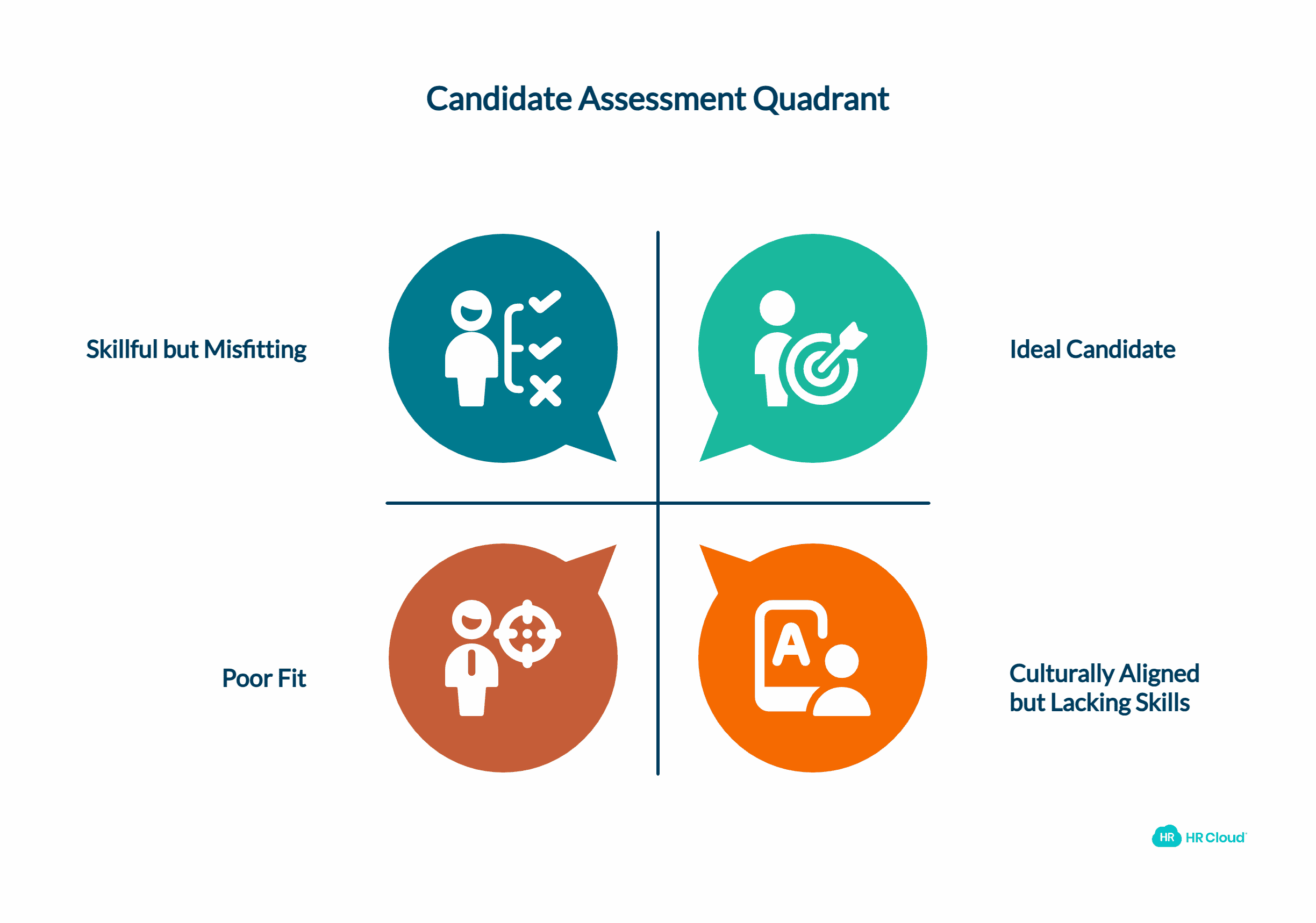
Interviewing candidates is probably the longest part of the recruitment process. Some interviews may last 30 minutes, while others can go on for over an hour. However, an interview is the most crucial step because it allows you to assess a candidate’s motivation, skills, and knowledge of the job.
But your interview process can also turn out to be a waste of time if you’re not doing it correctly. You must follow a structured process to make it easier and faster to hire candidates. To do this, make sure you have a specific set of questions, and they must be the same for each candidate you interview. Implementing structured interviews can help standardize your candidate selection process and lead to better hiring decisions.
It’s also important to ask the right questions in an interview so you can get a better understanding of the type of employee a candidate is. Here is a list of questions you should ask in an interview:
1. What are your interests in the job?
2. How would your fellow colleagues describe you?
3. What are your strengths and weaknesses?
4. Do you prefer working on your own or in a team?
5. How do you manage multiple projects?
6. Do you work well under pressure?
7. What are your long-term goals?
8. How do you learn new skills?
9. What is your ideal work environment?
You can add more questions to the list depending on the information you want to analyze during the interview. These questions can help you assess the candidate's fit for your company culture and their potential for internal mobility in the future.
5. Consider Hiring Internally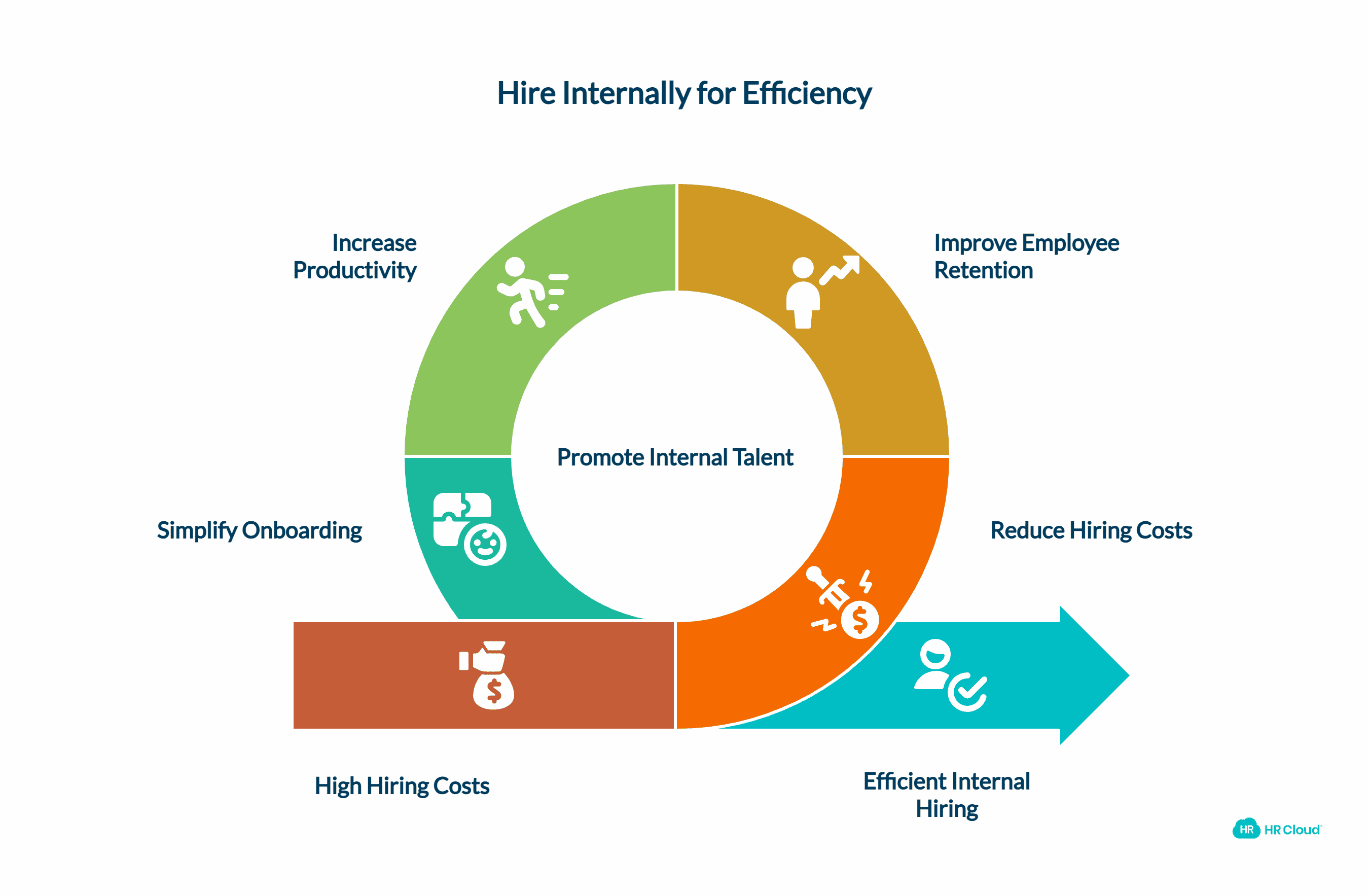
If you want to save time and money, then consider hiring internally. You’ll save on hiring costs because you don’t have to post job descriptions and pay for advertising or use resume platforms to find talent. Internal employees already have the knowledge and skill set that you may be looking for to fulfill a role.
Furthermore, if you regularly hire internally, it may increase employee retention because staff will aim to get promotions within your company. Employees may work harder to get noticed, so internal hires can also improve productivity, and they also offer the added bonus of being well-versed across your company culture, and could, therefore, already be a good fit to fill any relevant open positions. This approach can also simplify the employee onboarding process, as internal hires are already familiar with the company systems and processes.
Final Thoughts
Hiring new candidates doesn’t have to be a tedious process. All you need is the right strategies, like having structured questions or using the right platforms to perform certain tasks faster. If you’re struggling through the recruitment process, then use the tips in this article to help streamline the task and improve your overall recruitment efficiency.
To further optimize your hiring process, consider implementing recruitment metrics and recruitment analytics to measure your success and identify areas for improvement. By focusing on the entire candidate journey and enhancing the candidate experience, you can create a more effective and efficient hiring process that leads to better hiring decisions and improved candidate satisfaction.
 Discover how our HR solutions streamline onboarding, boost employee engagement, and simplify HR management
Discover how our HR solutions streamline onboarding, boost employee engagement, and simplify HR management
Author Bio:
This article is written by a marketing team member at HR Cloud. HR Cloud is a leading provider of proven HR solutions, including recruiting, onboarding, employee communications & engagement, and rewards & recognition. Our user-friendly software increases employee productivity, delivers time and cost savings, and minimizes compliance risk.
Keep Reading
Specialized Onboarding Software for Healthcare to Reduce Admin Work and Scale Hiring Fast
Imagine this: a women’s health clinic hires two new nurses, only to lose both within
A Closer Look at HR Cloud-ADP Integrations
ADP is the gold standard for payroll and core HR management. But if you’ve ever tried to
Retention Reset: How to Keep Your Best Talent in 2025
More employees are walking away from their jobs in 2025 not just for better pay, but for
Like What You Hear?
We'd love to chat with you more about how HR Cloud® can support your business's HR needs. Book Your Free Demo

Build a Culture of Recognition. Boost Engagement. Guaranteed.
Workmates empowers employees to stay informed, connected, and appreciated—whether they’re on the front line, in the office, or remote. Recognition drives 12x higher engagement.Trusted by industry leaders in every sector




Cut Onboarding Costs by 60%.
Take the confusion and follow-ups out of onboarding with automated workflows, digital forms, and structured portals—so new hires ramp faster 3X quicker.Trusted by industry leaders in every sector




